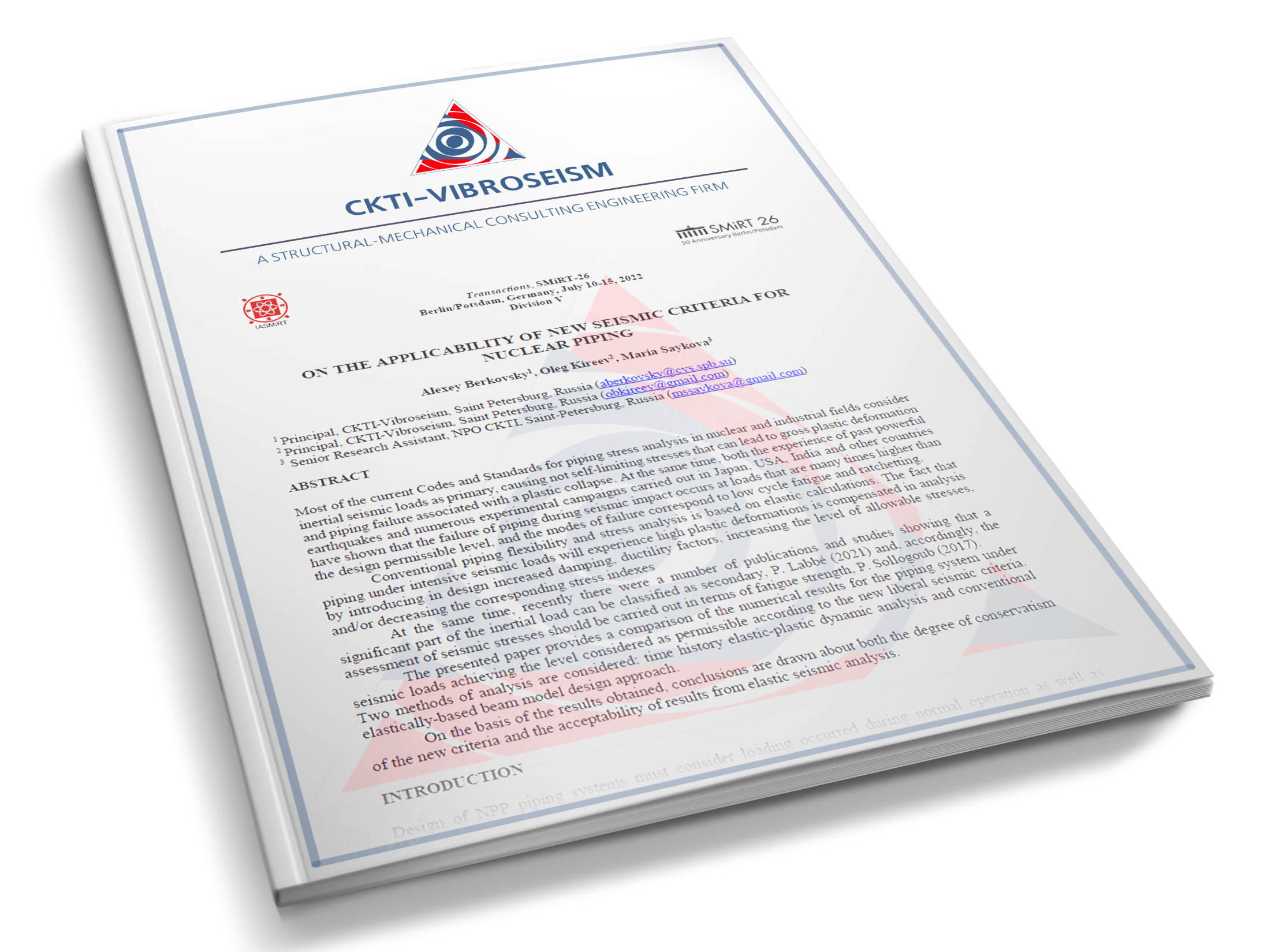ON THE APPLICABILITY OF NEW SEISMIC CRITERIA FOR NUCLEAR PIPING
Transactions, SMiRT-26, Division V. Berlin/Potsdam, Germany, July 10-15, 2022

- Авторы: : Берковский А.М. [Alexey M. Berkovskiy], Киреев О.Б. [Oleg B. Kireev], Сайкова М. [Maria Saykova]
- Редактор: English
- №: 49
- Библиотека: Conference Papers
- Год: 2022
- Файл: th2a5
Просмотры: 2516
Most of the current Codes and Standards for piping stress analysis in nuclear and industrial fields consider inertial seismic loads as primary, causing not self-limiting stresses that can lead to gross plastic deformation and piping failure associated with a plastic collapse. At the same time, both the experience of past powerful earthquakes and numerous experimental campaigns carried out in Japan, USA, India and other countries have shown that the failure of piping during seismic impact occurs at loads that are many times higher than the design permissible level, and the modes of failure correspond to low cycle fatigue and ratchetting.
Conventional piping flexibility and stress analysis is based on elastic calculations. The fact that piping under intensive seismic loads will experience high plastic deformations is compensated in analysis by introducing in design increased damping, ductility factors, increasing the level of allowable stresses, and/or decreasing the corresponding stress indexes
At the same time, recently there were a number of publications and studies showing that a significant part of the inertial load can be classified as secondary, P. Labbé (2021) and, accordingly, the assessment of seismic stresses should be carried out in terms of fatigue strength, P. Sollogoub (2017).
The presented paper provides a comparison of the numerical results for the piping system under seismic loads achieving the level considered as permissible according to the new liberal seismic criteria. Two methods of analysis are considered: time history elastic-plastic dynamic analysis and conventional elastically-based beam model design approach.
On the basis of the results obtained, conclusions are drawn about both the degree of conservatism of the new criteria and the acceptability of results from elastic seismic analysis.
 ООО «ЦКТИ-Вибросейсм»
ООО «ЦКТИ-Вибросейсм» 
